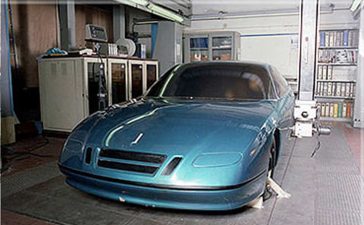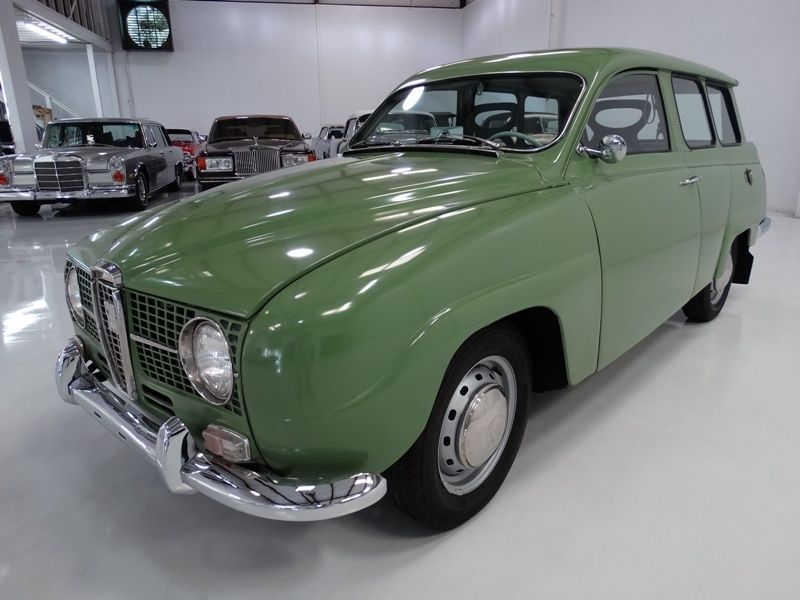Table of Contents
- 1 A new vision emerges: Saab 9.h2 and the hydrogen revolution
- 2 Marco Maltese: The man behind the vision
- 3 From fighter jets to family sedans: Design DNA in focus
- 4 Why hydrogen, and why now?
- 5 Saab’s design heritage: more than retro-futurism
- 6 A digital dream—but could it become a reality?
- 7 A tribute, a provocation, a possibility
A new vision emerges: Saab 9.h2 and the hydrogen revolution
There’s no shortage of car brands being dragged back from the dead for electric second lives. But this time, the resurrection story doesn’t come from corporate boardrooms or Chinese conglomerates. Instead, it springs from the imagination of Marco Maltese, an Italian automotive designer who’s never worked for Saab but seems to understand its DNA better than most.
The Saab 9.h2 is a virtual concept, yes. But it’s also something more: a clear, unfiltered expression of what a modern Saab could have been—rooted in aeronautical heritage, visually streamlined, and engineered around a hydrogen powertrain. In an era saturated with Teslas and sanitized EVs, this project speaks to those who still remember turbo lag, wraparound windshields, and asymmetric dashboards.
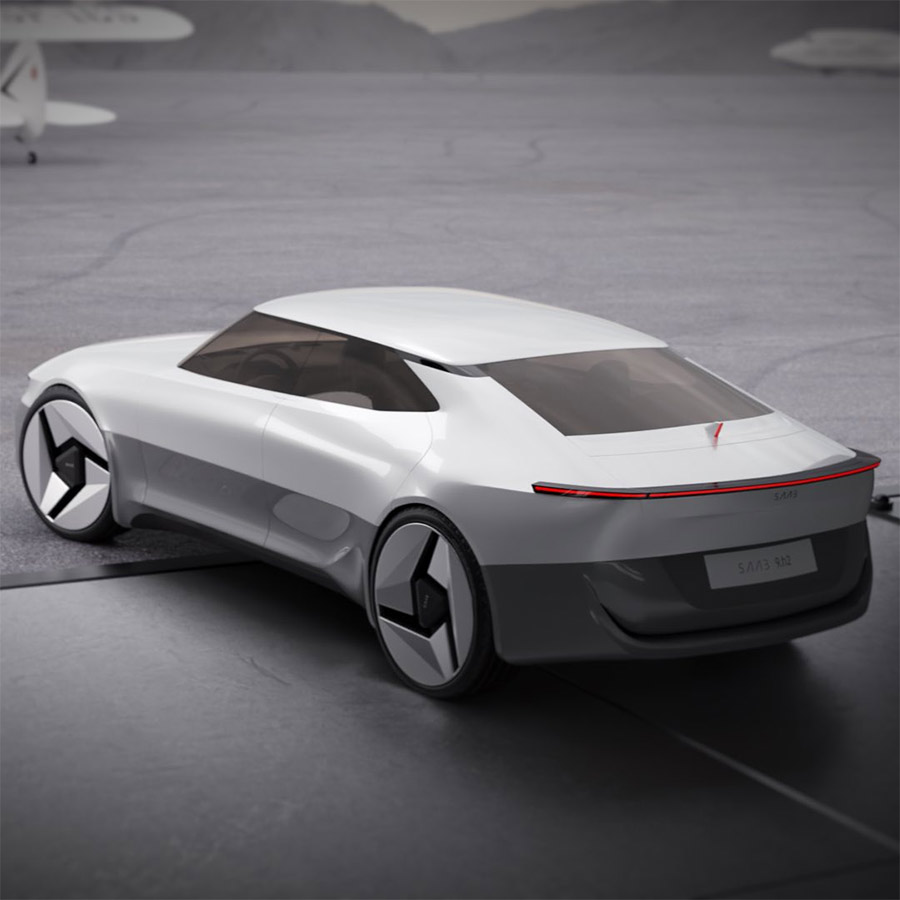
Maltese proposes a clean-sheet reboot of Saab, not through nostalgia, but by embracing innovation and retaining Saab’s nonconformist spirit.
Marco Maltese: The man behind the vision
Marco Maltese, known online through his handle @maltesedesign_concept, has carved out a niche in the world of digital car design with a flair for minimalist but character-rich creations. His Saab 9.h2 concept isn’t just another sleek EV with a Swedish badge photoshopped onto it—it’s a cohesive project with a strong backstory.
In his words, this concept is built around the idea of a young startup investing in hydrogen propulsion, choosing Saab for its history of technical audacity and independence from mainstream design language. It’s not a coincidence that he references the Saab 900 Aero, a model that still commands respect on the street and in collector circles.
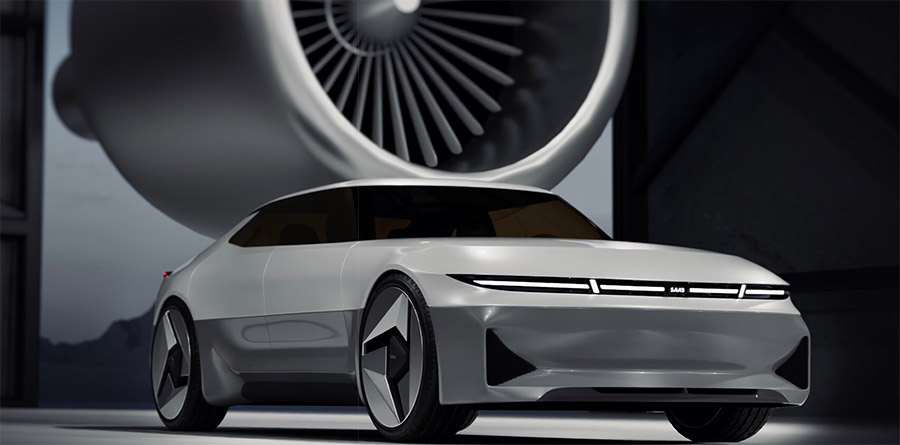
“Soft and smooth surfaces. Essential design. Inspired by aircraft canopies and fuselage lines,” explains Maltese, tying his vision directly to Saab’s roots in aviation.
From fighter jets to family sedans: Design DNA in focus
What sets this concept apart isn’t just its propulsion choice—hydrogen instead of batteries—but its unmistakable Saab-ness. The 9.h2 doesn’t attempt to copy existing models; it reinterprets their aeronautical essence. The front end, with its sweeping horizontal light strip, pays tribute to Saab’s fighter jet windshields, while the exaggerated C-pillar and clean, sculpted flanks evoke the Saab 900’s unmistakable stance.
The roofline is low-slung, the beltline is high, and the body is wrapped in a bicolor scheme reminiscent of classic Saab experimentation. Even the wheels—with their turbine-like inserts—echo the jet turbine aesthetic found in Saab’s concept cars of the 2000s like the Aero-X.
There’s no grille, of course, just like many EVs or hydrogen cars—but instead of a blank face, Maltese integrates a subtle aerodynamic curve into the front fascia, nodding to the functionalist ethos that governed Saab’s early engineering decisions.
Why hydrogen, and why now?
Hydrogen has its critics, but it also has plenty of vocal supporters—especially among those who think battery-electric isn’t the only road forward. Maltese’s imaginary startup doesn’t just choose hydrogen for novelty. It does so to make a statement: that alternative fuels can still embrace emotional design and historic lineage.
This isn’t just a Tesla killer fantasy. It’s a vision where clean mobility meets unique automotive character.
Hydrogen’s benefits—fast refueling, long range, no lithium mining—make it a natural ally for niche, highly engineered vehicles. A modern Saab could lean into that space, offering something intellectually and emotionally distinct from the increasingly generic world of BEVs.
Could the Saab 9.h2 be the hydrogen equivalent of the 900 Turbo SPG—a driver’s car with a brain and a soul? If this concept says anything, it’s that such a future might not be entirely out of reach.
Saab’s design heritage: more than retro-futurism
To appreciate the 9.h2, you have to understand the legacy it draws from. Saab wasn’t just another automaker—it was a brand that prioritized safety before it was cool, brought turbocharging to the masses, and maintained an aeronautical level of attention to detail in both form and function.
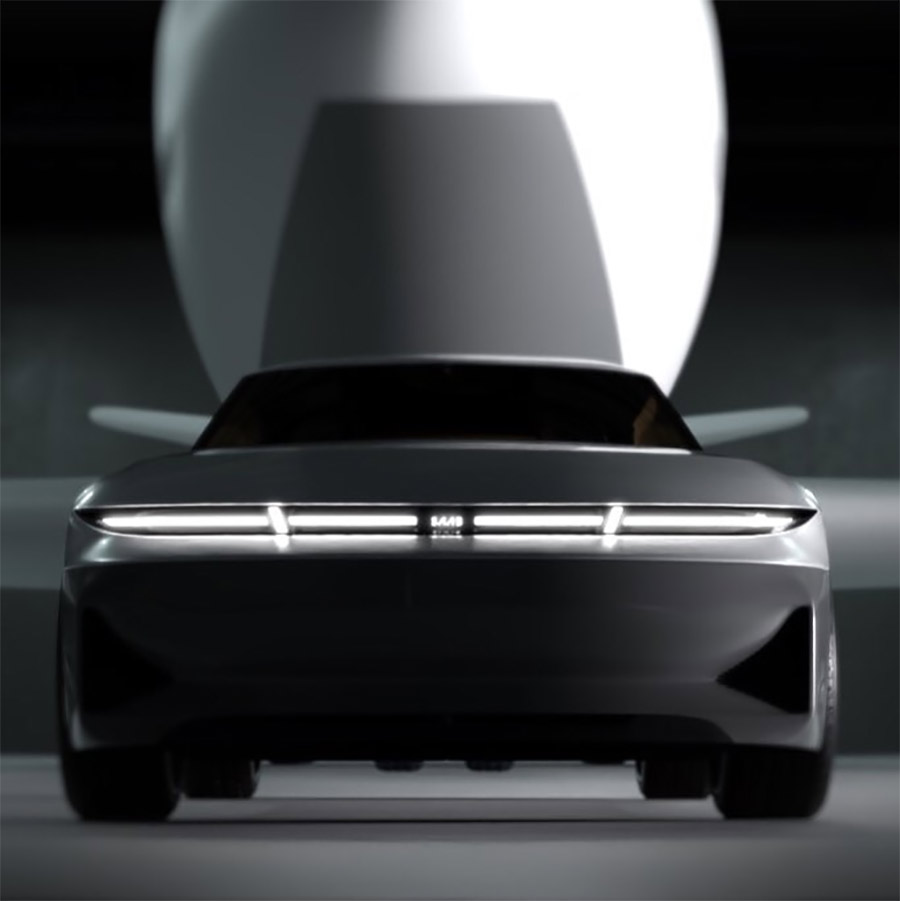
From the wraparound glass of the Saab 99 Turbo to the night panel feature in the 9-5, Saab never shied away from doing things differently. And while brands like Volvo have successfully pivoted into the EV era, Saab’s absence has left a vacuum—one that concepts like the 9.h2 dare to fill.
The fact that this concept wasn’t built by a conglomerate with marketing teams and executive boards only strengthens its credibility among Saab loyalists. This is a car imagined by someone who genuinely gets what Saab was about.
A digital dream—but could it become a reality?
Is the 9.h2 just another pixel-perfect fantasy? Sure. But what separates it from the usual vaporware is its grounding in a plausible technical roadmap. Hydrogen isn’t science fiction. It’s already being tested and deployed in vehicles like the Toyota Mirai and Hyundai NEXO. What’s missing isn’t the tech—it’s the design vision and brand story to sell it.
Reviving Saab as a hydrogen-focused startup may sound far-fetched, but it wouldn’t be the first time iconic names were resurrected for a new energy era. Look at how Alpine and DeLorean are being rebooted. In a world obsessed with heritage and identity, a clean-sheet Saab with bold design and clean propulsion could do more than just exist—it could stand out.
The only question is: who has the guts—and the capital—to try?
A tribute, a provocation, a possibility
The Saab 9.h2 doesn’t exist in metal and rubber, but it exists where it matters—in the minds of enthusiasts who want more than anonymous crossovers and sterile EVs. It’s a thought experiment with teeth, and a much-needed reminder that heritage doesn’t have to mean stagnation.
Thanks to Marco Maltese’s bold vision, the idea of a revived Saab suddenly feels less like wishful thinking and more like a question worth asking again. Could a new generation of engineers and designers breathe life into this defunct brand—not by looking backward, but by building on what made it great in the first place?
Whether or not the Saab 9.h2 ever rolls out of a hangar or onto a hydrogen filling station, it’s already done something important: it made people talk about Saab again.
Let us know your thoughts in the comments — would you drive a hydrogen-powered modern Saab?




